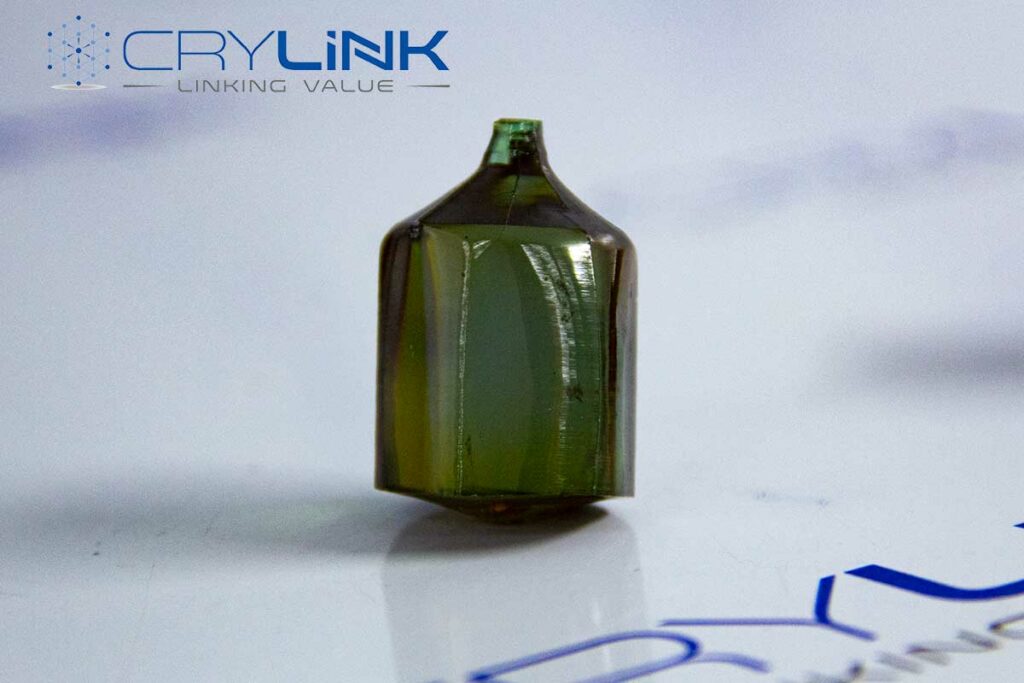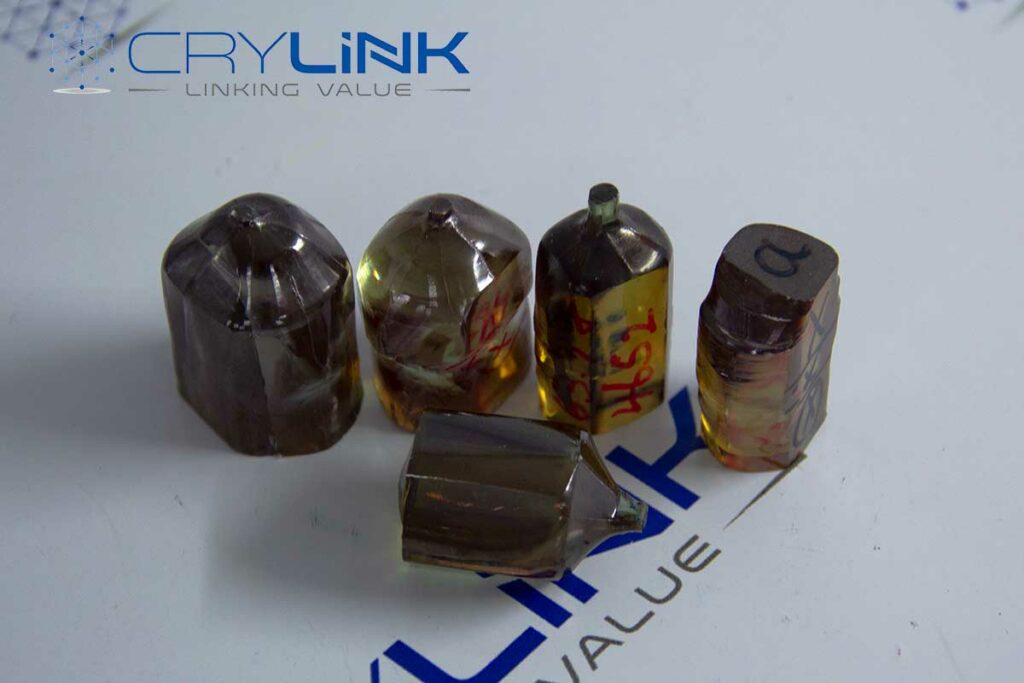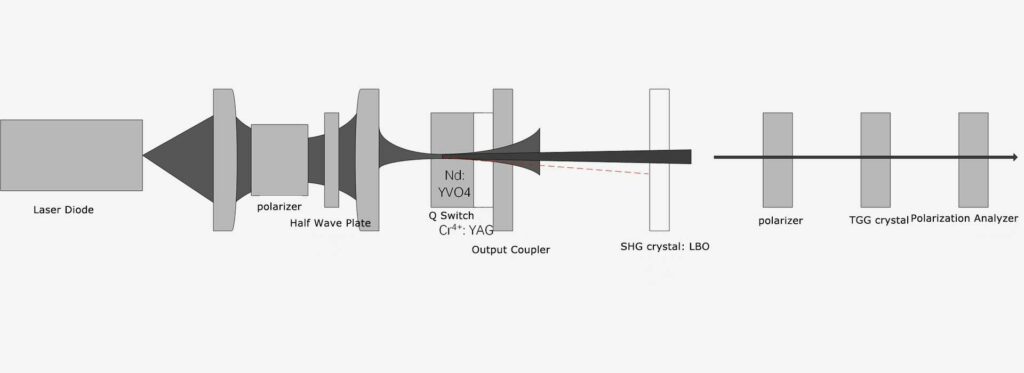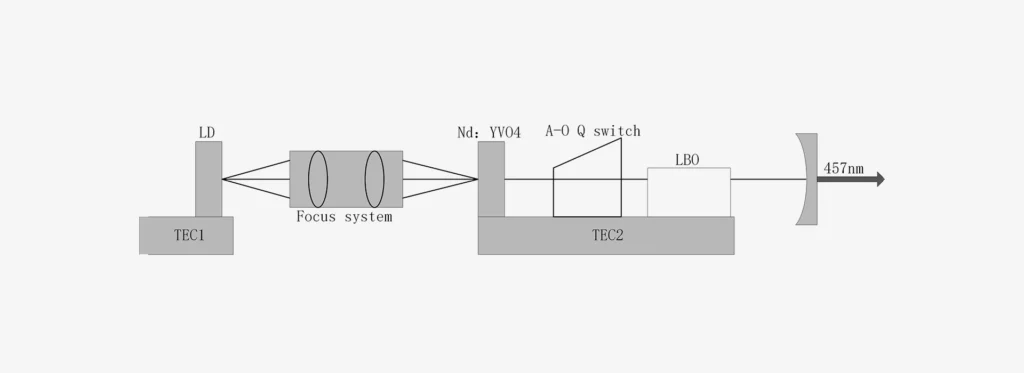Laser diodes produce coherent light by stimulating electrons to emit photons of a specific wavelength. Laser diodes have many applications in various fields of technology, such as communication, medicine, industry, entertainment, and research. One type of laser diode that has gained popularity recently is the YVO4 laser diode.
YVO4 stands for yttrium orthovanadate, a transparent crystal with unique optical properties. YVO4 is a positive uniaxial crystal, which means it has two refractive indices: one for ordinary rays (o-rays) and one for extraordinary rays (e-rays). The difference between these two indices is called birefringence, which is very large for YVO4.

This makes YVO4 an excellent material for polarizing components, such as prisms, beam splitters, isolators, and circulators.
Another property of YVO4 that makes it suitable for laser diodes is its ability to host rare-earth ions, such as neodymium (Nd), erbium (Er), ytterbium (Yb), and thulium. These ions can be doped into the crystal lattice of YVO4 and act as active centers for lasing. When pumped by an external source of light or electricity, these ions can emit photons with specific wavelengths that depend on their energy levels.
This article will focus on Nd: YVO4 laser diodes, among the most efficient and widely used solid-state lasers. We will discuss how they work, their advantages and disadvantages compared to other lasers, and some of their current and potential applications in technology.
How Nd: YVO4 Laser Diodes Work
Nd: YVO4 laser diodes consist of a thin Nd: YVO4 crystal sandwiched between two mirrors, forming a resonant cavity. The Nd: YVO4 layer is a gain medium that amplifies light through stimulated emission. The mirrors reflect light back and forth inside the cavity until it reaches a threshold intensity that allows it to escape through one of the mirrors as a coherent beam.
The Nd: YVO4 layer is pumped by an external source of light or electricity that excites the Nd ions from their ground state to higher energy levels. The most common pumping method is direct in-band pumping at 914 nm or 808 nm using another laser diode or an array of laser diodes called a diode bar. This method has several advantages over other pumping methods:
- It matches well with the absorption spectrum of Nd: YVO4
- It minimizes thermal effects such as heating and distortion
- It increases efficiency and output power
- It reduces complexity and cost

The emission spectrum of Nd: YVO4 covers several wavelengths in the near-infrared region from 900 nm to 1400 nm. However, the most commonly used wavelengths are 1064 nm (the fundamental wavelength) and 1342 nm (the second harmonic wavelength). These wavelengths can be converted into visible or ultraviolet light using nonlinear optical crystals such as KTP or LBO.
Advantages and Disadvantages of Nd: YVO4 Laser Diodes
Nd: YVO4 laser diodes have many advantages over other types of lasers:
- They have high efficiency (>50%) due to direct in-band pumping
- They have high output power (>10 W) due to a low threshold current
- They have high beam quality due to a small mode volume
- They have high stability due to low sensitivity to temperature changes
- They have high reliability due to their simple structure
However, they also have some disadvantages:
- They have limited tunability due to narrow emission bandwidth
- They have limited modulation speed due to long fluorescence lifetime
- They have a limited wavelength range due to material absorption
Applications of Nd:YVO4 Laser Diodes
Nd: YVO4 laser diodes have many applications in various technical fields:
- As a light source for fiber optic networks, free space optical links or satellite communications
- Used for data storage, such as holographic memory or optical disc.
- Used in surgery, dentistry, dermatology, ophthalmology, or photodynamic therapy
- Used for diagnosis, such as optical coherence tomography or fluorescence microscopy.
- Can be used for material processing, such as cutting, welding, drilling, marking or engraving
- Used for quality control, such as inspection, measurement or calibration.
- Used for display, such as projection systems or laser shows
- For games, like virtual reality or augmented reality.
- Used in spectroscopy, such as Raman or laser-induced breakdown spectroscopy.
- Used of measurement, such as interferometry or frequency standards.
Conclusions
Nd: YVO4 laser diodes are versatile devices that produce coherent light with high efficiency and power. They have many advantages over other lasers, such as high beam quality, stability, and reliability. They have many applications in various fields of technology, such as communication, medicine, industry, entertainment, and research. Nd: YVO4 laser diodes are expected to be important in developing future technologies.
FAQs
Q: What is YVO4?
A: YVO4 is a transparent crystal with large birefringence and a wide transparency range. It is an excellent material for polarizing components and host crystals.
Q: What is Nd: YVO4?
A: Nd: YVO4 is a solid-state laser that uses a thin layer of YVO4 doped with neodymium ions as a gain medium.
Q: How are Nd: YVO4 laser diodes pumped?
A: Nd: YVO4 laser diodes are usually pumped by direct in-band pumping at 914 nm or 808 nm using another laser diode or a diode bar.
Q: What are the main wavelengths emitted by Nd: YVO4 laser diodes?
A: The main wavelengths emitted by Nd: YVO4 laser diodes are 1064 nm (the fundamental wavelength) and 1342 nm (the second harmonic wavelength). These wavelengths can be converted into visible or ultraviolet light using nonlinear optical crystals.
Q: What are some of the advantages and disadvantages of Nd: YVO4 laser diodes?
A: Some advantages of Nd: YVO4 laser diodes are high efficiency, high output power, high beam quality, high stability, and high reliability. Some of the disadvantages are limited tunability, limited modulation speed, and limited wavelength range.

Frank
Frank graduated from the University of Shanghai for Science and Technology, majoring in optics. As a technical engineer at Crylink Company, he deeply understands crystal materials and laser components.
Related Video(s) with this Article
Related Product(s) with this Article
Related Application(s) with this Article



